Meet an Educator is a monthly series by Early Bird, where we feature the work of educators across India who are actively spreading the joy of birds and nature. This month’s featured educator is Padma Gyalpo, a bird guide from Leh, Ladakh, who hopes to share whatever knowledge and information he has gained so far with as many local people as possible.
Do tell us about yourself, where you are from, and your work.
My name is Padma Gyalpo and I am from Shey Village, Leh in Ladakh. I am a bird guide and tour operator focusing on birding and wildlife photography in Ladakh. I am also an executive member of the Wildlife Conservation and Bird Club of Ladakh (WCBCL). I am a postgraduate in environmental science and have completed a number of certificate courses related to ornithology.
Previously, I had interned with the SECURE Himalaya Project by UNDP in Leh under Natural History documentation, G.B. Pant National Institute of Himalayan Environment-Ladakh Regional Center and completed documenting the People’s Biodiversity Register at the Municipal Committee of Leh.
I have published several articles in the journal ‘Indian Birds‘ regarding new and rare bird sightings in Ladakh. Several other articles have also been published in Stawa Magazine, Jungwa Magazine and Hima Paryavaran, etc. Over the years I recorded 11 new bird species and 2 new butterfly species in Ladakh. Finally, I am also an eBird Regional & Hotspot Editor for Ladakh.
What excites you about the natural world?
Whenever I’m out birding, I always prefer quiet places with minimal artificial sounds. I love hearing birds chirping while I sit beside a small, crystal-clear stream and watch colourful butterflies pass by. Here in Ladakh, the landscape changes with each season. It always feels pleasant to be outdoors in a quiet place, marvelling at the snow-capped mountain peaks, crystal-clear rivers and streams, and patches of trees and grasses that indicate a healthy environment.
Among all these wonders, what excites me most is the migration of birds—especially during the months of August and September—when migratory birds that breed north of India and on the Tibetan Plateau pass through Ladakh on their way to spend the winter in mainland India. During this period, we get to witness some of the rarest birds, and the feeling of spotting one is truly second to none.

When and how did you get interested in bird/nature education?
Nature education wasn’t on my mind when I first started exploring wildlife in Ladakh around 12 years ago. In 2010, my father purchased a small Sony Cybershot camera for general use, and I began carrying it with me everywhere. I would photograph every living creature I came across—from small spiders to large animals—even though I had no proper knowledge of birds, habitats, or citizen science at the time.
In 2018, I got the opportunity to attend a 15-day workshop organized by the Snow Leopard Conservancy – India Trust, led by Dr. Tsewang Namgyal, Director of SLC-IT. The learnings from the workshop sparked a genuine interest in seriously exploring and studying the flora and fauna of Ladakh.
That same year, I joined the Wildlife Conservation and Birds Club of Ladakh, founded by Chairman Sh. Lobzang Visuddha. Soon after, I was introduced to eBird—and there was no looking back. Over time, I learned a lot by exploring different parts of Ladakh across seasons. Among all the animals, birds piqued my interest the most, largely due to the eBird app, which allowed me to keep my observations well-organized.
Today, there are ample resources available to learn about birds in Ladakh, and I truly enjoy sharing my knowledge with fellow Ladakhis, helping them appreciate the natural treasures that surround us.
What do you hope to achieve through your education work?
Through my occasional bird walks and nature walks, I hope to share whatever knowledge and information I have gained so far with as many local people as possible. I had to struggle a lot during my initial years, as there were no bird or nature walks available at the time. I learned bit by bit—by meeting different people and reading books.
I believe that not everyone should have to go through the same challenges I faced, and I feel it is my responsibility to make things easier for others who are interested. By doing so, I hope they can access knowledge more easily and develop a sense of responsibility to protect Ladakh’s fragile environment for future generations.
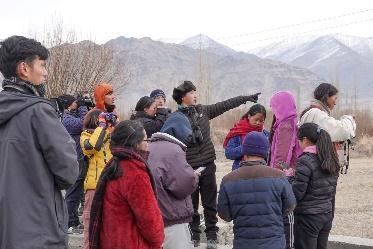
Why do you believe it is important for children to learn about birds or connect with nature?
Ladakh has a very fragile ecosystem, where most of the land is covered with snow-capped mountains. Only in the valley floors do we find cultivable land, which supports most of the region’s vegetation and wildlife. Birds, like butterflies, are indicators of a healthy environment, and the presence of a variety of bird species is good news for all. Various studies have shown that climate change affects bird migration, and this impact is clearly visible in Ladakh as well.
Children are the future of this world, and if they are made aware of the natural world from a young age, they will be better equipped to take responsibility for its protection and conservation. Not only birds, but small insects also play a vital role in the ecosystem, and children need to be taught about these roles in a practical, hands-on way. Everything in nature is interconnected, and any imbalance in one part of the world will inevitably affect others.
What tools or resources have helped you in teaching about birds? Can you describe an approach that has worked exceptionally well for you?
Binoculars and spotting scopes have been very useful for showing wildlife to students, but the pocket guides have been equally valuable. I received several copies of the Birds of Ladakh pocket guide from Early Bird, and they have been especially helpful, as they are much easier to carry and refer to than a bulky field guide. On various occasions, I have borrowed binoculars from friends when there are many participants.
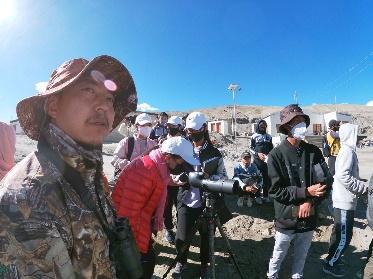
Have you encountered a significant challenge as a bird/nature educator, how did you overcome it?
A few challenges I have faced include a lack of appreciation for other living beings among some participants, noise pollution and garbage encountered during nature and bird walks, arranging logistics and refreshments, and dealing with sub-zero temperatures—especially during the initial stages.
Providing pocket guides to each participant, and arranging additional binoculars and spotting scopes, helped spark interest among the participants, as they were able to observe birds up close without disturbing them. When the pocket guides were no longer available, I created a photo collage of 10–15 common birds based on the season and printed a few copies for participants to use as a temporary field guide.
One recurring challenge I’ve encountered is the issue of garbage along nature trails—especially in places like the Shey and Chuchot marshes, which, despite being less visited by tourists, are still affected. I always try my best to incorporate environmental issues into nature walks, in the hope that participants will understand the importance of a healthy environment and recognise that we humans are just one of many species sharing this space with other living organisms.
Do share any memorable moment or experience you have had in teaching kids about birds/nature. Can you recall any insightful instance that shaped your perspective?
The most memorable experiences have always been the overwhelming number of questions I receive—especially from children. Their way of interpreting nature, though simple, plays a very important role in a child’s development.
Among the many moments I cherish, one particular experience stands out. It was in September 2023, when I was in Hanley village for a six-day nature education program organised by Little Green World. The program brought together around 15–20 schoolchildren from various government schools across Leh district.
One boy, in particular, showed a keen interest in my birdwatching sessions. He always managed to wake up before me and would be waiting outside my room, ready to join me just five minutes before the scheduled time for our early-morning bird watching near the Hanley wetland. Every day, until the very end of the program, he was by my side, asking endless questions with unwavering enthusiasm.
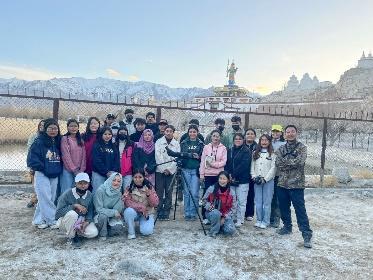
His dedication paid off when we spotted a single Wood Warbler (Phylloscopus sibilatrix)—an extremely rare bird in India. He was overjoyed as I explained the significance of this sighting in that location. He spent several minutes observing the warbler carefully through the binoculars and was excited to describe its plumage and how well it blended in with the foliage.
To this day, we are still connected through social media, and I never miss a chance to respond to his curious questions. His genuine curiosity and eagerness to understand the intricacies of the natural world are exactly what I hope to see in every child and young person I meet.
Have you noticed any changes in your learners after they received exposure to birds and nature-based learning? If yes, what are they? If not, why do you think that is?
Yes, after each bird walk session, participants gain a better understanding of how the natural world works, and many of them ask me about the dates of the next session. I believe that not everything can be covered in a single bird walk, and not every species can be seen at the same time.
They, too, feel that there is always more to learn. I always make sure to speak about conservation at the end, and the participants enthusiastically engage in meaningful conversations, trying to come up with solutions to the environmental and wildlife-related challenges in Ladakh.
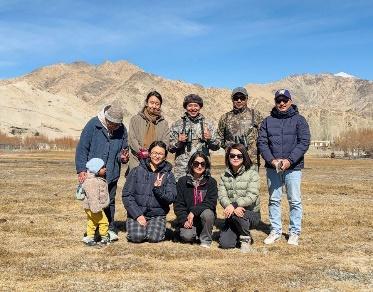
What message would you have for your fellow educators, or somebody starting out in their nature education journey?
I would like to say: make things as relevant as possible to your audience. Ensure that you have the proper knowledge and are well-equipped with gear and pocket guides. Above all, be prepared to face questions you may not have imagined at all.

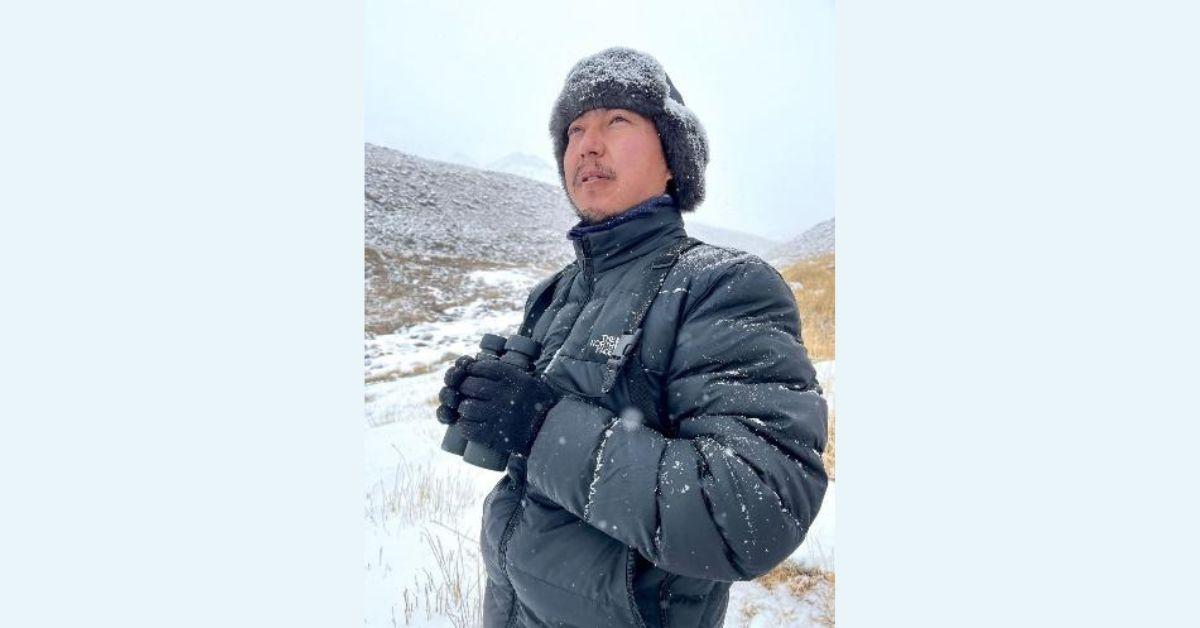
Excellent work being done by Gyalpo ley and team. Kudos on the rare sightings as well! All the best and many more!